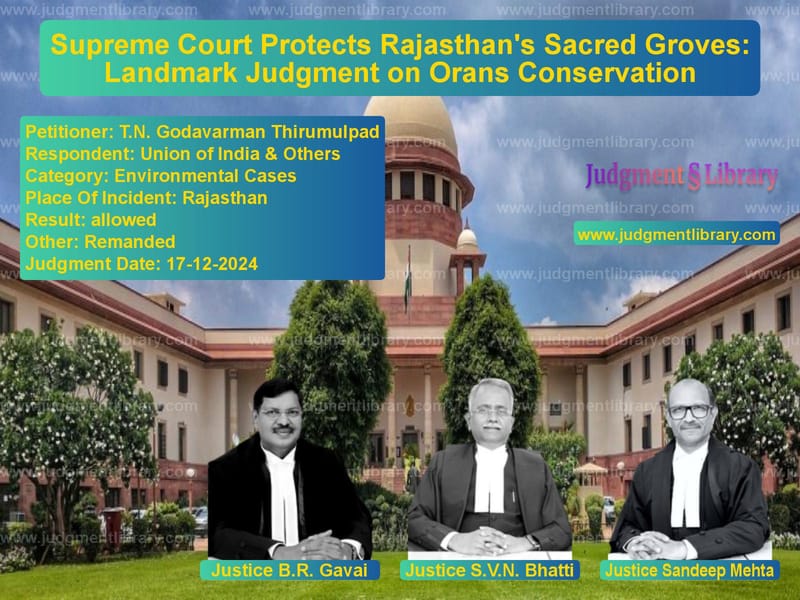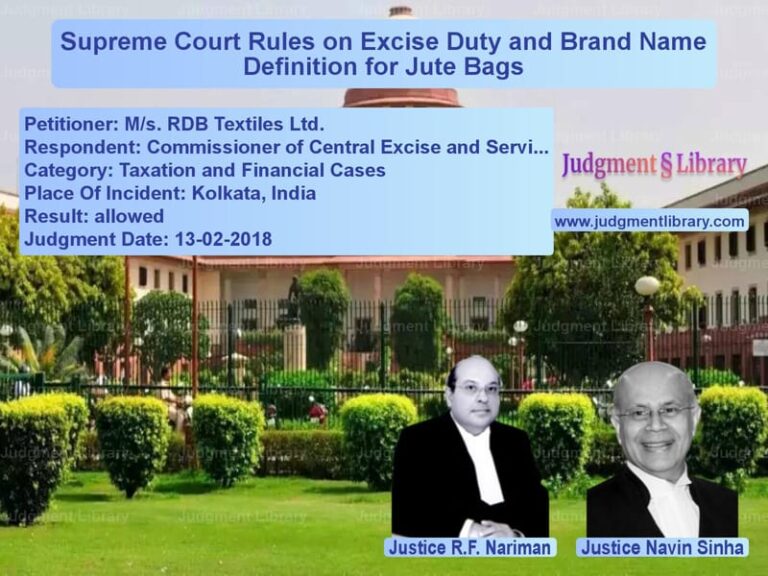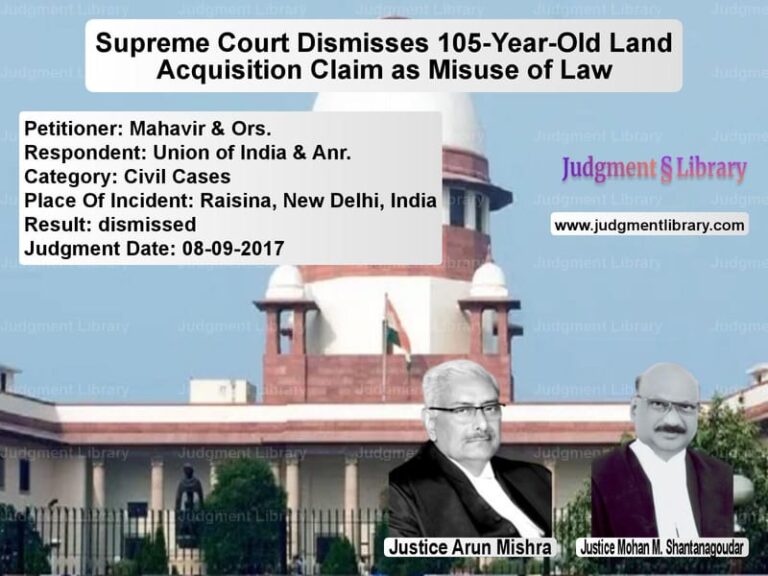Supreme Court Protects Rajasthan’s Sacred Groves: Landmark Judgment on Orans Conservation
The Supreme Court of India, in the case of In Re: T.N. Godavarman Thirumulpad vs. Union of India & Others, addressed the urgent need to protect Rajasthan’s Orans (sacred groves) under the Forest (Conservation) Act, 1980. This judgment, delivered on December 18, 2024, provides a legal framework for the recognition and conservation of these ecologically and culturally significant landscapes.
Background of the Case
India has over 100,000 sacred groves, which are small or large forested areas traditionally preserved by local communities for religious and ecological purposes. These groves are referred to by different names across states:
- Orans in Rajasthan
- Devrai in Maharashtra
- Kavu in Kerala
- Devarakadu in Karnataka
- Umanglai in Manipur
- Law Kyntang in Meghalaya
The present case concerns the sacred groves of Rajasthan, known as Orans, which cover an area of 600,000 hectares and play a crucial role in local biodiversity conservation.
Legal and Environmental Issues
The petition sought the following:
- Recognition of Orans as forests under the Forest (Conservation) Act, 1980.
- Protection of Rajasthan’s 1100 major Orans that provide vital resources such as water, grazing land, and forest produce.
- Implementation of the Central Empowered Committee’s (CEC) recommendations to categorize Orans as protected areas.
- Inclusion of sacred groves under the Biological Diversity Act, 2002 and the Wildlife Protection Act, 1972.
Arguments Presented
Arguments by the Amicus Curiae
- Orans serve as natural biodiversity reserves and require legal protection.
- Recognition under Section 36-C of the Wildlife Protection Act, 1972 as ‘community reserves’ would ensure conservation.
- These groves are essential for aquifer recharge, soil conservation, and climate change adaptation in arid Rajasthan.
- Community-led conservation efforts should be integrated into state policy.
Arguments by the State of Rajasthan
- The state has identified and documented several Orans for classification as ‘forests.’
- A process has been initiated to include sacred groves in the state’s conservation framework.
- The Rajasthan Forest Policy, 2023, incorporates Orans under community forest management.
- The state is willing to amend its policies to provide further protections.
Supreme Court’s Observations
The Supreme Court analyzed the legal, ecological, and cultural significance of sacred groves and emphasized:
On the Definition of Forests
The Court reiterated the principle laid down in T.N. Godavarman Thirumulpad (1997), which held that:
“The term ‘forest’ must be understood according to its dictionary meaning, which includes all statutorily recognized forests, whether designated as reserved, protected, or otherwise.”
On the Role of Communities
The Court acknowledged that Orans have historically been protected by local communities and directed that:
“The Rajasthan government must integrate community-led conservation into its forest management policies to ensure the sustainable protection of these sacred groves.”
On the Implementation of the CEC Report
The Supreme Court endorsed the CEC recommendations, which include:
- Recognizing all Orans as forests under the Forest (Conservation) Act, 1980.
- Conducting a statewide survey of sacred groves.
- Implementing protective measures to prevent encroachment and deforestation.
Final Verdict
The Supreme Court:
- Directed the Rajasthan government to complete the identification and notification of sacred groves within eight months.
- Ordered the Ministry of Environment, Forest, and Climate Change (MoEFCC) to formulate a national policy for the governance of sacred groves.
- Mandated legal recognition of Orans under the Wildlife Protection Act, 1972, as ‘community reserves.’
- Established a 5-member expert committee to oversee the implementation of these directives.
Implications of the Judgment
This landmark ruling reinforces the importance of community-driven conservation and ensures the legal protection of sacred groves. The key takeaways include:
- Formal recognition of Orans as forests prevents unauthorized land use and deforestation.
- Integrating local communities in conservation strengthens sustainable forest management.
- Recognition under international environmental agreements supports India’s global conservation commitments.
The Supreme Court’s decision serves as a precedent for the protection of sacred groves across India, ensuring the conservation of both ecological and cultural heritage.
Petitioner Name: T.N. Godavarman Thirumulpad.Respondent Name: Union of India & Others.Judgment By: Justice B.R. Gavai, Justice S.V.N. Bhatti, Justice Sandeep Mehta.Place Of Incident: Rajasthan.Judgment Date: 17-12-2024.
Don’t miss out on the full details! Download the complete judgment in PDF format below and gain valuable insights instantly!
Download Judgment: t.n.-godavarman-thir-vs-union-of-india-&-oth-supreme-court-of-india-judgment-dated-17-12-2024.pdf
Directly Download Judgment: Directly download this Judgment
See all petitions in Environmental Cases
See all petitions in Landlord-Tenant Disputes
See all petitions in Public Interest Litigation
See all petitions in Judgment by B R Gavai
See all petitions in Judgment by S.V.N. Bhatti
See all petitions in Judgment by Sandeep Mehta
See all petitions in allowed
See all petitions in Remanded
See all petitions in supreme court of India judgments December 2024
See all petitions in 2024 judgments
See all posts in Environmental Cases Category
See all allowed petitions in Environmental Cases Category
See all Dismissed petitions in Environmental Cases Category
See all partially allowed petitions in Environmental Cases Category







